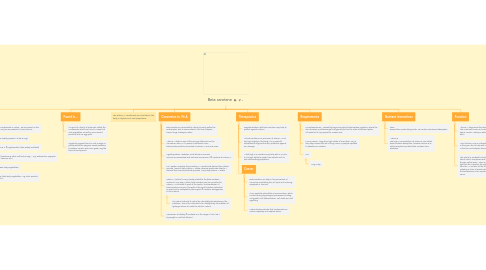Beta carotene
by Simon Ashby


1. Conversion to Vit A
1.1. Beta-carotene is converted to retinol primarily within the enterocytes, also to some extent in the liver, adipose tissue, lungs, kidneys & retina
1.2. Vitamin A status is one of the primary influences on the conversion rate i.e. if a person is deficient, more beta-carotene will be converted to vitamin A and vice versa.
1.3. Hypothyroidism, diabetes, renal failure & anorexia nervosa are associated with reduced conversion of β-carotene to vitamin A
1.4. • In Western societies the provitamin A carotenoids derived from plants provide <30% of daily vitamin A intake, whereas preformed vitamin A derived from animal products provides >70% daily vitamin A intake.
1.5. vitamin A (retinol) is very closely related to the beta-carotene molecule. One way in which beta-carotene can be converted to vitamin A is to break it apart at the center. The breakdown of beta-carotene occurs in the walls of the small intestine (intestinal mucosa) and is catalysed by the enzyme β-carotene dioxygenase to form retinal.
1.5.1. The retinal reduced to retinol by retinaldehyde reductase in the intestines. This is the reduction of an aldehyde by the addition of hydrogen atoms to make the alcohol, retinol.
1.6. Conversion of dietary β-carotene is in the range of 10 to 28:1 by weight so not that efficient
2. Found in...
2.1. It is part of a family of chemicals called the carotenoids, which are found in many fruit and vegetables, as well as some animal products such as egg yolks.
2.2. Lipophilic pigment found in red, orange or yellow plants like peppers, sweet potatoes, tomatoes, carrots, and some green veg like broccoli and spinach.
3. Function
3.1. Vitamin A has several functions in the body. The most well known is its role in vision - hence carrots "make you able to see in the dark"
3.2. Main function is as an antioxidant. Can be found in the eyes, skin to help with UV damage. Mostly in the liver and adipose tissue (like retinol).
3.3. The retinol is oxidized to its aldehyde, retinal, which complexes with a molecule in the eye called opsin. When a photon of light hits the complex, the retinal changes from the 11-cis form to the all-trans form, initiating a chain of events which results in the transmission of an impulse up the optic nerve.
4. Like vitamin A, carotenoids are circulated in the body in chylomicrons and lipoproteins.
5. Nutrient interactions
5.1. Fibre Excess fibre, particularly pectin, can reduce carotenoid absorption
5.2. Vitamin E Too high a concentration of vitamin E can inhibit beta-carotene absorption, however vitamin E or alpha tocopherol protect beta carotene from oxidation
6. Requirements
6.1. • Carotenodermia - caused by large amounts of betacarotene ingestion, where the skin develops a yelloworange hue typically first on the soles of feet and palms of hands but it may spread to a wider area
6.2. • Lung cancer - long-term high intake of more than 7mg a day may increase the risk of lung cancer in people exposed to asbestos or smokers.
6.3. SUL
6.3.1. 7mg a day
7. Therapeutics
7.1. Supplementation with beta carotene may help to protect against sunburn
7.2. As beta carotene is a precursor of vitamin A and has high activity in the body; it is a powerful antioxidant that gives the skin protection against sun damage.
7.3. A diet high in B carotene may help with CVD due to it's high ability to quash free radicals and it's anti inflammatory properties.
7.4. Cancer
7.4.1. Beta-carotene can help in the prevention of cancer by modulating the cell cycle and inducing apoptosis in tumours
7.4.2. It can regulate intercellular communication, which controls many physiological processes including cell growth, cell differentiation, cell death and cell signalling
7.4.3. Invitro studies indicate that carotenoids can reduce adiposity and adipose tissue.
